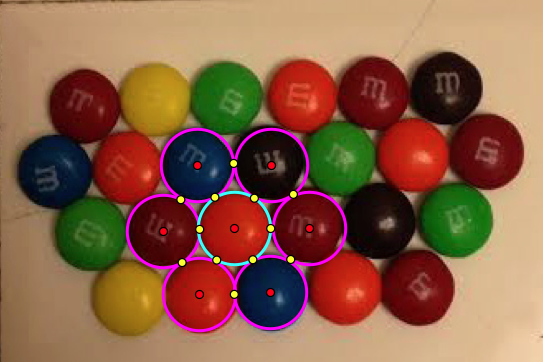This is a picture of a pizza slice wrapped in aluminum foil. Although it may be hard to see, the foil is folded in such a way that the edge is parallel to the opposite edge of the pizza, therefore forming two triangles. These two triangles are similar.
Guide:
A=point to the lower left
B=point farthest to the top
C=point farthest to the right
D=point on line AB
E=point on line AC
Proof:
Statements: Reasons:
1. m<A=m<A 1. Reflexive Property
2. Line DE and line BC are ||. 2. Given
3. m<ADE=m<ABC 3. If two parallel lines are cut by a transversal, then corresponding angles are congruent.
4. Triangle ABC is congruent 4. AA Postulate
to triangle ADE.
Instead of using <ADE and <ABC, I also could have used <AED and <ACB. Both would fulfill the criteria of using the AA Postulate, that two angles from each triangle must be congruent for the triangles to be proved similar. (~RG1)

























.JPG)
















